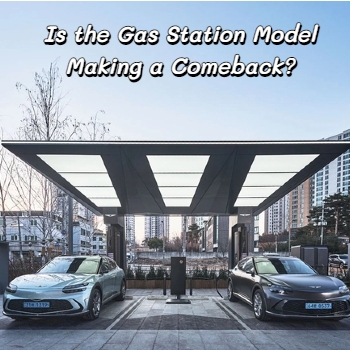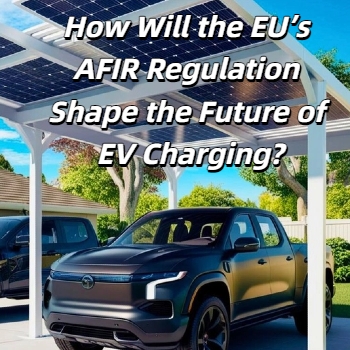Sep 15, 2025
🧾Why Is the EU Introducing the Alternative Fuels Infrastructure Regulation (AFIR)?
The European Union has recognized that charging infrastructure is a critical bottleneck in the mass adoption of electric vehicles (EVs). To address this, the Alternative Fuels Infrastructure Regulation (AFIR) sets clear requirements for member states to expand and standardize EV charging networks. By mandating accessibility, availability, and minimum power levels, the EU aims to create a seamless cross-border driving experience while reducing range anxiety for EV owners.
🤔What Does the “Every 60 Kilometers” Requirement Really Mean?
One of the most ambitious aspects of AFIR is the requirement that along the Trans-European Transport Network (TEN-T) core roads, there must be at least one fast-charging station every 60 kilometers. This rule is not just about quantity; it is about ensuring that long-distance EV travel becomes as convenient as refueling at a traditional petrol station. By setting this standard, the EU ensures no major gaps exist in the charging landscape, especially on key freight and passenger routes.
⚡️Why Is 150 kW the Minimum Standard for Fast Charging?
AFIR requires that each of these stations offers at least 150 kW of charging capacity, a significant upgrade compared to older 50 kW fast chargers. This benchmark reflects the growing demand for ultra-fast charging that reduces waiting times for drivers. As EV battery sizes increase, higher charging power is crucial to support both passenger cars and future heavy-duty electric trucks. The 150 kW requirement strikes a balance between technology readiness, grid capacity, and consumer expectations.
🌍How Will AFIR Influence EV Adoption Across Europe?
A robust charging infrastructure is one of the strongest drivers of consumer confidence. With AFIR in place, the EU is not only eliminating the fear of limited range but also standardizing infrastructure quality across member states. This harmonization will accelerate EV sales, encourage long-distance EV travel, and support the EU’s broader climate goals under the Green Deal. Countries with less developed charging networks will now be incentivized to catch up, reducing regional disparities.
⁉️What Challenges Could Arise from Implementing AFIR?
While the regulation sets ambitious targets, challenges remain. The power grid must be upgraded to handle high charging loads at frequent intervals. Land allocation for stations in densely populated or environmentally sensitive areas could also slow progress. Additionally, operators face the challenge of ensuring profitability while offering reliable and affordable services. Collaboration between governments, grid operators, and private companies will be key to overcoming these barriers.
🖥️How Can Industry Players Position Themselves for This Transformation?
For charging infrastructure companies, AFIR represents both an obligation and a market opportunity. By aligning with the regulation, operators can secure a role in building Europe’s largest fast-charging network.
At FES Power, we are already prepared to support this transformation with a full portfolio of charging solutions:
⭐️120–160 kW DC fast chargers that meet the AFIR requirement for long-distance travel corridors.
⭐️ 150–480 kW solar-integrated ultra-fast chargers, designed for service areas and high-demand hubs, combining renewable energy with cutting-edge storage technology.
⭐️7–22 kW wall-mounted AC chargers and 3.5–7 kW portable chargers, ideal for residential and commercial sites to complement public infrastructure.
⭐️46–60 kW mobile charging units that provide flexible, on-demand charging for events, fleets, or emergency backup
By offering a scalable range of solutions, from home charging to grid-connected ultra-fast charging, our company enables partners across Europe to meet AFIR standards and deliver a superior charging experience to EV drivers.🔗 Learn more: https://www.fescharging.com/
Read More

